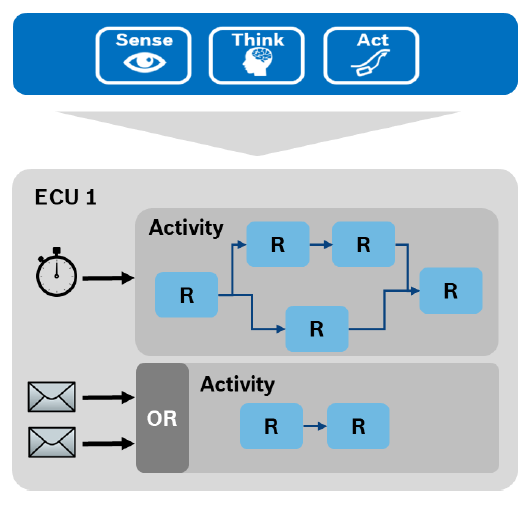ETAS DMS for architects: Architecture-as-code. Git-based collaboration. Auto-generated graphics.
In ADAS (Advanced Driver Assistance Systems) and AD (Autonomous Driving) projects, software architects play a crucial role in designing and shaping the software infrastructure that enables the functionality and intelligence of these systems. Their responsibilities involve various tasks to ensure the successful development and deployment of safe and efficient autonomous driving technologies.
System Design and Architecture
Software architects are responsible for defining the overall system architecture and designing the software components that make up the ADAS/AD system. They create a high-level plan that outlines how different software modules will interact, communicate, and work together to achieve the desired functionality.
Performance Optimization
In real-time ADAS/AD applications, performance optimization is critical. Software architects analyze and optimize algorithms and software modules to ensure the system can operate efficiently and respond quickly to changing conditions.
Collaboration
Software architects work closely with other team members, including hardware engineers, control engineers, data scientists, and testers, to ensure effective collaboration throughout the development process.
How ETAS DMS supports software architects
In ETAS Deterministic Middleware Solution, the software architecture is specified with YAAA, a domain-specific language.
YAAA provides means to specify interfaces as well as runnables. The latter communicate via ports that are typed by the interaces. Runnables are grouped to activities, forming so-called runnable-graphs for which ETAS DMS ensures deterministic behavior.
Through separation of concerns, interfaces, runnables, activities are all managed in separate YAML files.
The activity graph provides an architectural description of the system.
Learn more about the YAAA modeling concepts and workflow.

Benefits
Through the architecture-as-code approach, creating and changing artifacts is as easy as writing code.
This brings several benefits:
- The YAAA DSL provides an easy to learn syntax
- Due to the conventional project structure, architecture files are well organized
- Keeping architecture description together with actual code ensures consistency
- The YAAA VS Code add-on provides convenience features such as syntax-highlighting and code completion
- No switching between tools required: editing architecture description files and actual functional code can be done in the same editor of choice
- With the help of YAAA-Vis, graphical
visualizations of the system can be automatically generated and provide an up-to-date
graphical representation of the system

- As YAAA DSL are plain text files, they can also be generated by other tools
Efficiency gains
- The initial creation of software architecture is comparable to other approaches (e.g., graphical modeling)
- Faster changes: 2-3x faster implementation of changes due to textual specification over graphical modeling
- Eased communication with stakeholders with the help of auto-generated, up-to-date graphical visualizations